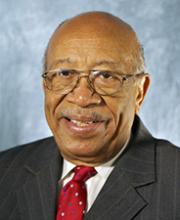Bonner Springs and Edwardsville may be interested in applying for American Rescue Plan Act (ARPA) funds.
At a Unified Government ARPA subcommittee meeting on March 22, representatives of the two cities indicated interest in receiving some of the ARPA funding that the UG has not yet spent.
Another ARPA subcommittee event, a community workshop, is scheduled from 5:30 p.m. to 7 p.m. tonight, March 29, both virtually and in person at City Hall, 701 N. 7th St., Kansas City, Kansas. At the workshop the public may discuss how COVID has affected them and the community, and discuss how they would prioritize recovery funds. The workshop will be on Zoom. Registration is required to https://us02web.zoom.us/meeting/register/tZYpdemprDIiGd2rYOBG2IDTNYr2jZ4ldL5g.
Kathleen von Achen, UG chief financial officer, told the ARPA subcommittee on March 22 that ARPA funding for the smaller cities was determined by the state under the direction of the state treasury office. The cities received allocations directly from the state. Bonner Springs received $6 million and Edwardsville received $680,000. The school districts also received ESSER allocations from federal funding.
The UG ARPA subcommittee has been actively evaluating the process for distributing funds and setting priorities.
The ARPA funding to the UG was split between an allocation to the city of Kansas City, Kansas, and Wyandotte County.
Von Achen said $7.2 million in ARPA funding to Wyandotte County is still available and has not yet been allocated. Initially Wyandotte County received $32 million in ARPA funding, she said, and the county’s estimated revenue loss replacement was $11 million. An immediate needs resolution was adopted on Aug. 26, to spend $8.5 million, with an additional $1.58 million set aside for housing assistance.
Public health in Wyandotte County received $8.3 million, according to Von Achen. There also were allocations for the Area Agency on Aging and community corrections. Public health expenditures included the vaccination facility at the downtown UG Health Department expanded; booster shots and pediatric shots for ages 5 to 11 expanded; contact tracing for managing the spread of COVID, quarantine and isolation housing, free food and cleaning supplies, technical assistance for local health providers, long-term care facilities and mental health facilities.
Also, the Community Health Improvement Plan was addressed, and violence prevention staff was hired, along with a health equity coordinator.
About $1.85 million was allocated through United Way for housing assistance, she said. These funds should be distributed to nonprofit agencies for all of Wyandotte County, she said.
About $500,000 has been allocated for nonprofits, and these allocations are still pending, to be launching in April, according to Von Achen.
According to Bonner Springs officials, the city is experiencing a need for funding to address stormwater problems.
Edwardsville officials discussed a need for funding for participation in the dispatch system, and other issues.
Von Achen said that while the UG could decide to give some of the county ARPA funding to Bonner Springs and Edwardsville, the cities would have to apply for the funding and tell how it would be used. The UG is required to have this sort of information and application before it allocates any funding to agencies, governments and organizations, as part of the rules governing ARPA spending, according to von Achen. The UG cannot just make a line-item allocation to the cities.
Local nonprofits also may apply for ARPA funding from the UG. More information on the application process is at https://www.wycokck.org/files/assets/public/board-of-commissioners/documents/arpa-nonprofit-application-process-1.18.22.pdf.
For more information on the workshop tonight, see https://www.wycokck.org/Engage-With-Us/Calendar-of-Events/ARPA-Community-Workshop-1.

